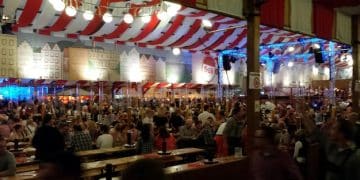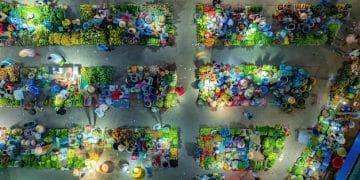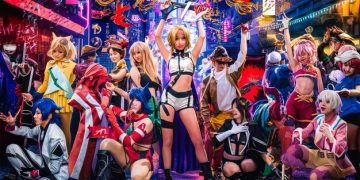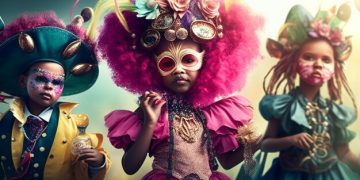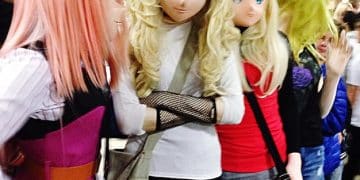Cosplay: More Than Just a Hobby, a Geek Lifestyle Phenomenon
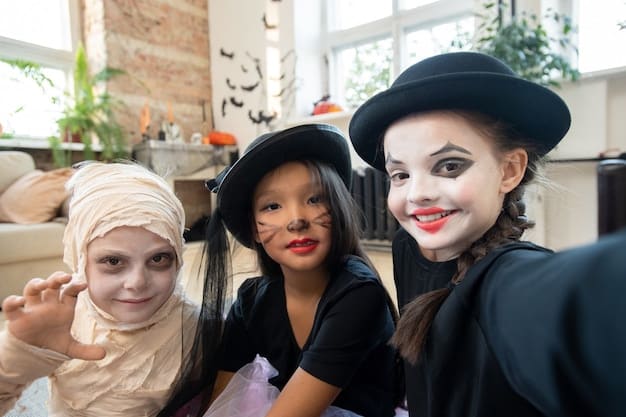
Cosplay, short for “costume play,” is a performance art where individuals dress up as characters from various media, evolving into a significant aspect of geek culture, offering creativity, community, and self-expression.
Cosplay isn’t just about dressing up; it’s an immersive experience that blends creativity, craftsmanship, and community. For many, cosplay is a passion that enhances their everyday life. Let’s find out more about cosplay and delve into why it resonates deeply within the geek community.
What Exactly is Cosplay?
Cosplay, a portmanteau of “costume play”, is the art of dressing up as characters from anime, manga, video games, comic books, movies, TV shows, and other forms of media. Often seen as a hobby, it’s also a lifestyle for many geeks worldwide.
Cosplayers not only recreate the outfits of their favorite characters but also embody their personalities, mannerisms, and iconic poses. The level of dedication can range from simple, store-bought costumes to intricate, handcrafted creations.
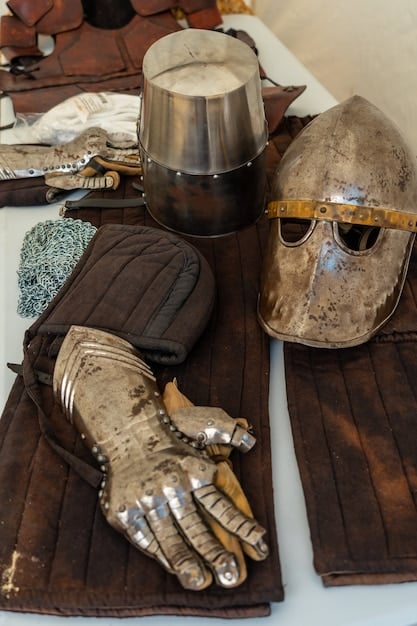
The Art of Costume Creation
Many cosplayers take pride in creating their costumes from scratch. This involves a wide range of skills, including:
- Sewing and tailoring for fabric-based costumes.
- Armor-making using materials like EVA foam, thermoplastics, and fiberglass.
- Prop creation using 3D printing, woodworking, and sculpting.
- Wig styling and makeup artistry to complete the look
The time and effort put into costume creation can be substantial, with some projects taking months or even years to complete. For many, the process of building a costume is just as enjoyable as wearing it.
Why Cosplay Appeals to Geeks?
Cosplay resonates deeply with the geek community for several reasons:
- Self-Expression: Cosplay allows individuals to express their love for specific characters and stories in a tangible way.
- Creativity: The process of creating a costume fosters creativity and problem-solving skills.
- Community: Cosplay brings people together through conventions, meetups, and online forums.
- Escapism: Stepping into the shoes of a beloved character can provide a temporary escape from everyday life.
Cosplay offers a unique blend of creativity, self-expression, and community that appeals to many within the geek culture. It’s more than just dressing up; it’s about embodying a passion and sharing it with others.
Cosplay Conventions: A Hub for Creativity and Community
Cosplay conventions are central to the cosplay community. These events provide a space for cosplayers to showcase their creations, meet fellow enthusiasts, and celebrate their shared passion.
These conventions offer a wide range of activities, including costume contests, panels, workshops, photo shoots, and vendor halls. They are an excellent opportunity to immerse yourself in the world of cosplay and connect with like-minded individuals.
What Happens at Cosplay Conventions?
Cosplay conventions are vibrant, bustling events filled with activity. Some key aspects include:
- Costume Contests (Masquerades): Cosplayers compete for prizes based on the craftsmanship and presentation of their costumes.
- Panels and Workshops: Experts share their knowledge on topics like costume construction, wig styling, and prop making.
- Photo Shoots: Cosplayers gather to take photos of each other in their costumes, often in themed settings.
- Vendor Halls: Merchants sell costumes, props, accessories, and other cosplay-related merchandise.
Conventions are also a great place to meet professional cosplayers, voice actors, and other industry figures.
Major Cosplay Conventions in the US
The United States is home to many large and well-known cosplay conventions, including:
- San Diego Comic-Con: One of the largest and most diverse conventions in the world, with a significant focus on cosplay.
- Anime Expo: The largest anime convention in North America, showcasing a wide range of anime and manga cosplay.
- Dragon Con: A multi-genre convention held in Atlanta, Georgia, known for its elaborate costumes and vibrant atmosphere.
- New York Comic Con: Another major convention featuring comics, video games, movies, and television, with a strong cosplay presence.
These conventions attract thousands of cosplayers and fans each year, making them a vital part of the cosplay community.
Cosplay conventions serve as a hub for creativity, community, and celebration. For many cosplayers, they offer a unique opportunity to connect with others who share their passion and express themselves through costume and performance.
The Craftsmanship Behind Cosplay: Materials and Techniques
Craftsmanship is at the heart of cosplay. Cosplayers use a variety of materials and techniques to bring their characters to life, demonstrating impressive skill and ingenuity.
From sewing and armor-making to prop creation and makeup artistry, the world of cosplay is filled with talented individuals who are constantly pushing the boundaries of what’s possible.
Essential Materials for Cosplay
Cosplayers utilize a wide range of materials, depending on the type of costume they are creating. Some of the most common materials include:
- Fabrics: Cotton, polyester, spandex, and various specialty fabrics are used for clothing and accessories.
- EVA Foam: A lightweight and versatile material ideal for creating armor and props.
- Thermoplastics: Materials like Worbla and Thibra can be molded and shaped with heat, perfect for creating intricate details.
- 3D Printing Filaments: PLA, ABS, and other filaments are used to create complex shapes and components with 3D printers.
Other essential materials include paints, adhesives, wigs, and makeup.
Key Techniques in Cosplay Construction
In addition to materials, cosplayers must master a variety of techniques to create high-quality costumes. Some of the most important techniques include:
- Sewing and Pattern Making: Essential for creating accurate and well-fitting clothing.
- Armor-Making: Techniques like foam fabrication, heat-sealing, and painting are used to create realistic armor.
- Prop Creation: Methods include 3D printing, sculpting, casting, and painting to build weapons and accessories.
- Wig Styling: Techniques like cutting, layering, and heat-styling are used to create character-accurate hairstyles.
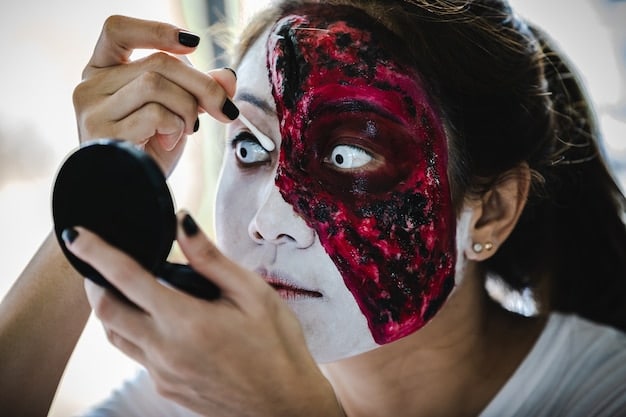
Many cosplayers learn these techniques through online tutorials, workshops, and collaboration with other cosplayers.
The craftsmanship behind cosplay is a testament to the creativity and dedication of the cosplayer community. By mastering a variety of materials and techniques, cosplayers are able to transform themselves into their favorite characters and bring their imaginations to life.
The Social Impact of Cosplay: Community and Identity
Beyond the artistry and craftsmanship, cosplay has a significant social impact. It fosters a sense of community, allows individuals to explore their identities, and promotes inclusivity and acceptance.
For many, cosplay is a way to connect with others, express themselves, and find a sense of belonging within the geek culture.
Building a Community Through Cosplay
Cosplay provides a strong sense of community in several ways:
- Conventions and Meetups: These events provide opportunities for cosplayers to meet, share tips, and collaborate on projects.
- Online Forums and Groups: Online communities connect cosplayers from around the world, allowing them to share their work, ask for advice, and support each other.
- Collaborative Projects: Group cosplays and themed shoots encourage cosplayers to work together and build relationships.
The cosplay community is generally welcoming and supportive, encouraging newcomers and celebrating individual achievements.
Exploring Identity Through Cosplay
Cosplay can also be a powerful tool for self-discovery and identity exploration:
- Expressing Interests: Cosplaying as a favorite character allows individuals to express their passions and connect with others who share those interests.
- Challenging Gender Norms: Crossplay (dressing as a character of the opposite gender) can be a way to challenge traditional gender roles and express gender fluidity.
- Embracing Body Positivity: Cosplayers of all shapes and sizes can find characters that resonate with them and celebrate their bodies.
Cosplay provides a safe space for individuals to experiment with their identities and express themselves freely.
Cosplay’s social impact extends far beyond the costumes and conventions. It’s a powerful force for building community, fostering self-expression, and promoting inclusivity within the geek culture. Through cosplay, individuals can connect with others, explore their identities, and find a sense of belonging.
Cosplay and Pop Culture: A Symbiotic Relationship
Cosplay and pop culture have a symbiotic relationship, each influencing and enriching the other. Cosplay draws inspiration from pop culture, while also driving its visibility and popularity.
The characters, stories, and worlds of pop culture provide endless inspiration for cosplayers, while cosplayers, in turn, help to promote and celebrate these works.
How Pop Culture Influences Cosplay
Pop culture provides the raw materials for cosplay:
- Character Design: Cosplayers meticulously recreate the designs of characters from various media, paying attention to every detail.
- Storytelling: Cosplayers often embody the personalities and mannerisms of their characters, bringing their stories to life.
- World-Building: Cosplay can transport fans into the worlds of their favorite games, movies and books.
New trends in pop culture often lead to new waves of cosplay inspiration.
How Cosplay Influences Pop Culture
Cosplay, in turn, gives back to pop culture:
- Promotion: Cosplayers help to promote their favorite works by showcasing their costumes at conventions and online.
- Fan Engagement: Cosplay encourages fans to engage more deeply with the characters and stories they love.
- Visibility: Cosplay brings pop culture out of the screen and into the real world, making it more visible and accessible.
The presence of cosplayers at conventions and other events can generate significant buzz and excitement for new releases.
Cosplay and pop culture exist in a constant state of mutual influence. Pop culture provides the inspiration, while cosplay breathes new life into the characters and stories that fans adore. This symbiotic relationship strengthens both cosplay and pop culture, enriching the experiences of fans around the world.
The Future of Cosplay: Trends and Innovations
Cosplay is a dynamic and ever-evolving art form. As technology advances and new trends emerge, the future of cosplay promises to be even more exciting and innovative.
From 3D printing and augmented reality to sustainable materials and inclusive practices, the cosplay community is continuously pushing the boundaries of what’s possible.
Emerging Trends in Cosplay
Several emerging trends are shaping the future of cosplay:
- 3D Printing: More cosplayers are using 3D printers to create complex props and armor pieces with incredible detail.
- Augmented Reality (AR): AR technology is being integrated into cosplay to create interactive and immersive experiences.
- Sustainable Materials: Cosplayers are increasingly using eco-friendly materials like recycled fabrics and biodegradable plastics.
These trends are helping to make cosplay more accessible, sustainable, and engaging.
Innovations in Cosplay Techniques
Cosplayers are also developing new and innovative techniques:
- Advanced Lighting Effects: LED lights, EL wire, and other lighting technologies are being used to create stunning visual effects.
- Animatronics and Robotics: Cosplayers are incorporating animatronics and robotics into their costumes to create moving parts and interactive features.
- Digital Fabrication: Cosplayers are using laser cutters, CNC machines, and other digital fabrication tools to create precise and intricate designs.
These innovations are expanding the possibilities of cosplay and allowing cosplayers to create truly remarkable creations.
The future of cosplay is bright, thanks to the creativity, ingenuity, and passion of the cosplay community. As technology continues to evolve, cosplayers will undoubtedly find new and exciting ways to express themselves and bring their favorite characters to life. With emerging trends and innovative techniques, the possibilities for are limitless.
| Key Point | Brief Description |
|---|---|
| 🎭 Cosplay Basics | Dressing up as characters from media, involving creativity and community. |
| 🎉 Conventions | Hubs for showcasing costumes, meeting enthusiasts, and celebrating shared passions. |
| 🧵 Craftsmanship | Skills ranging from sewing to prop creation, showcasing talent and ingenuity. |
| 🤝 Community Impact | Fosters community, identity exploration, inclusivity, and self-expression. |
Frequently Asked Questions
Cosplay, short for costume play, is a performance art where individuals dress up as characters from anime, manga, video games, comic books, movies, or other forms of media. It combines creativity, craftsmanship, and community.
Cosplay is often showcased at conventions, meetups, and online forums. Conventions like San Diego Comic-Con and Anime Expo offer platforms to display costumes and meet fellow enthusiasts in person.
Cosplayers use a variety of materials, including fabrics, EVA foam, thermoplastics, and 3D printing filaments. The specific materials depend on the type of costume being created and the desired level of detail.
Cosplay significantly impacts geek culture by fostering community, self-expression, and inclusivity. It allows people to connect with others, explore their identities, and find a sense of belonging within the geek community.
Future trends in cosplay include increased use of 3D printing, incorporation of augmented reality, and a focus on sustainable materials. These innovations will make cosplay more accessible, engaging, and environmentally friendly.
Conclusion
Cosplay stands as a vibrant and multifaceted facet of the geek lifestyle, extending beyond mere costume-wearing to encapsulate profound creativity, community bonds, and expressions of identity. From meticulously crafting costumes to enlivening pop culture at conventions, cosplay embodies passion. As technology advances, the journey forward for cosplay promises limitless innovation and imaginative exploration.
